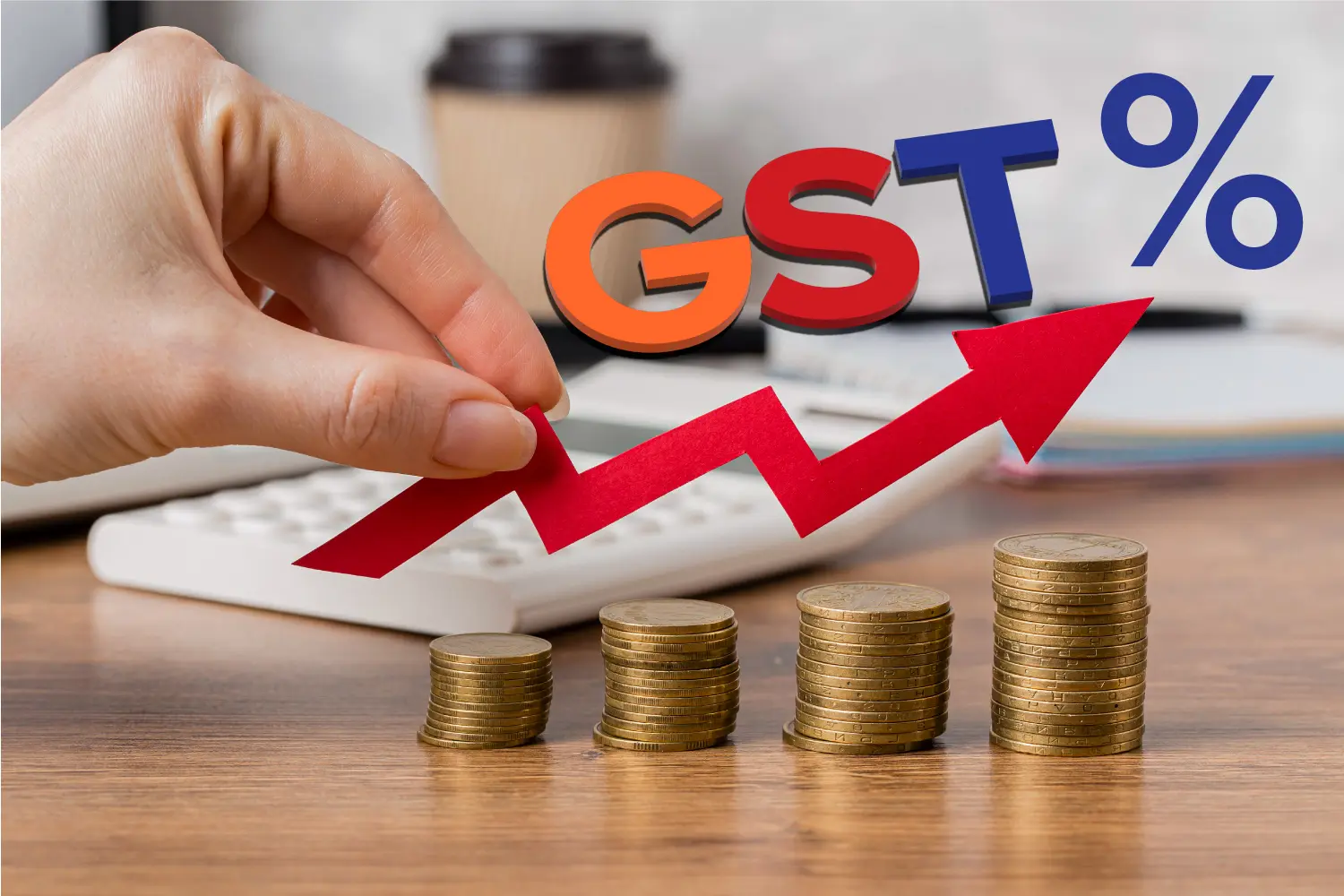- Goods and Services Tax (GST) is a comprehensive indirect tax implemented in many countries, including India. Its main purpose is to replace multiple taxes levied by the central and state governments with a single tax, thereby simplifying the tax structure and promoting economic efficiency. Here are some of the key reasons for implementing GST and its associated benefits and challenges:
What are the advantages (benefits) of GST?
- Simplified Tax Structure: GST replaces a complex tax structure with a single, unified tax. It subsumes various indirect taxes such as excise duty, service tax, and value-added tax (VAT), leading to a simplified tax regime.
- Elimination of Cascading Effect: GST is designed to eliminate the cascading effect of taxes. In the earlier tax system, taxes were levied at each stage of the supply chain, leading to tax on tax. GST allows for the credit of taxes paid on input goods and services, reducing the overall tax burden.
- Uniform Tax Rates: GST aims to bring uniformity in tax rates across the country, reducing regional economic imbalances. It helps in creating a common market by ensuring that goods and services are taxed at the same rates across states.
- Boost to GDP: A simplified tax structure and the elimination of tax cascading can lead to increased efficiency in the economy, potentially boosting GDP growth.
- Improved Compliance: GST introduces a more transparent and technology-driven tax system, making it easier for businesses to comply with tax regulations. This can lead to higher tax compliance rates.
- Promotion of E-commerce: With a common tax structure for goods and services, GST facilitates the growth of e-commerce by providing a level playing field for online and offline businesses.
What is disadvantages (Loss) of GST?
- Initial Implementation Challenges: The introduction of GST can be challenging as businesses adapt to the new tax regime. There may be initial disruptions and confusion during the transition period.
- Technology Infrastructure: A smooth implementation of GST requires robust technology infrastructure for both taxpayers and tax authorities. Some businesses, especially small and medium enterprises (SMEs), may face challenges in adopting new technologies.
- Multiple Tax Slabs: Critics argue that the multiple tax slabs in GST (such as 5%, 12%, 18%, and 28%) can complicate the tax structure and go against the principle of simplicity. It may lead to classification issues and disputes.
- Compliance Burden: While GST aims to simplify tax compliance, businesses may still find it challenging to comply with the various provisions, filings, and deadlines, especially if they operate in multiple states.
- Impact on Inflation: The transition to GST may have short-term inflationary effects as some goods and services may become more expensive due to higher tax rates.
हमारे अन्य लेख भी पढ़ें:-
- जीएसटी के फायदे और नुकसान: भारत की अर्थव्यवस्था पर इसका प्रभाव
- जीएसटी कैलकुलेटर: अपने जीएसटी की ऑनलाइन गणना करें
- क्रिफ स्कोर vs सिबिल स्कोर
- कर चोरी: परिभाषा, परिणाम और दंड
- अपने व्यापारिक (यातायात) वाहन पर जीएसटी इनपुट कैसे प्राप्त करें?
- ई-मैंडेट क्या होता है, लाभ, पात्रता और प्रक्रिया
- चेक बाउंस: परिभाषा, परिणाम, शुल्क और दंड
- भारत में सोने पर आयकर: डिजिटल, भौतिक और कागजी सोने की सम्पूर्ण जानकारी
- What is Crif Score? CRIF vs CIBIL Score
How GST is calculated?
- Thus, a simple formula arises: GST Amount = (Original Cost*GST Rate Percentage) / 100.
- Net Price = Original Cost + GST Amount.
Example:
Suppose, the original cost of a product is Rs 100 and the GST rate is 18%.
- Gross Cost = Original Cost + Taxes = 100 + (100 * 18%) = 100 + 18 = Rs 118
- Net Cost = Gross Cost – Tax = 118 – (100 * 18%) = 118 – 18 = Rs 100
In conclusion,
- GST is a significant tax reform that aims to streamline the taxation system and provide various benefits to the economy. However, its success depends on effective implementation, addressing challenges, and continuous improvements based on feedback from businesses and stakeholders.
FAQs:
Why is GST needed?
- The Goods and Services Tax (GST) is a significant reform in the tax structure, primarily aimed at creating a single, unified market. It replaces multiple indirect taxes to streamline the taxation process, making it more transparent and efficient.
What is the purpose of a GST?
- GST aims to eliminate the cascading effect of taxes, where tax is levied on tax, leading to higher prices for consumers. By integrating various taxes into one, it simplifies the tax system, making it easier for businesses and benefiting consumers with lower costs.
What is the main motive of GST?
- The main motive of GST is to boost economic efficiency and ensure a seamless flow of goods and services across the country. It seeks to enhance the overall economic growth by reducing trade barriers in the form of state taxes.
What are the 4 types of GST?
- There are four types of GST: Central GST (CGST), State GST (SGST), Integrated GST (IGST), and Union Territory GST (UTGST). Each serves a specific purpose in the distribution of tax revenue between the central and state governments.
What is the GST benefit?
- Growth of GDP (Gross Domestic Product):
- The introduction of GST (Goods and Services Tax) is expected to have a positive impact on India's GDP growth. By reducing tax rates and eliminating multiple point taxation, GST aims to simplify the tax structure and enhance compliance. A uniform tax system will create a seamless market across the country, making India a common market. This simplification will facilitate smoother trade and commerce, encouraging businesses to expand and invest. As a result, GST is likely to boost overall economic activity, leading to increased revenues for the government and promoting exports. The positive effects on trade and the overall economic environment are anticipated to contribute significantly to the growth of India's GDP.
What are the negative points of GST?
Disadvantages of GST:
- Increased Costs: Compliance with GST regulations can lead to higher operational costs for businesses.
- Higher Tax Liability for SMEs: Small and medium enterprises may face a higher tax burden due to the complexities of the GST system.
- Penalties and Fines: Non-compliance or errors in filing can result in significant penalties and fines.
- Impact on the Unorganised Sector: The unorganised sector may struggle to adapt to the formalities of GST, leading to potential losses.
- Teething Issues: Initial implementation has caused confusion and operational difficulties for businesses.
Who needs to pay GST?
- GST is mandatory for businesses with an annual turnover exceeding a certain threshold, which is currently set at Rs. 20 lakhs for most states and Rs. 10 lakhs for North-Eastern and hill states. This includes manufacturers, service providers, and traders.
What is the limit of GST?
- The GST registration limit is Rs. 20 lakhs for service providers and Rs. 40 lakhs for goods suppliers in most states, with lower thresholds for special category states.
What is GST in simple words?
- GST is a comprehensive, multi-stage tax levied on the supply of goods and services, designed to be collected at every stage of production or distribution, with the facility of input tax credit.
How to calculate ITC?
- To calculate ITC, subtract the taxes paid on inputs from the taxes collected on sales. This mechanism allows businesses to reduce their tax liability by claiming credit for the tax already paid on inputs.
Who can claim GST refund?
- Businesses and individuals can claim a GST refund in cases of excess payment due to an error, export of goods or services under bond or Letter of Undertaking (LUT) without paying tax, and in specific other situations as prescribed under GST law
We hope that you like this content and for more such content Please follow us on our social site and YouTube and subscribe to our website.
Manage your business cash flows and payable/receivables using our Bahi Khata App


